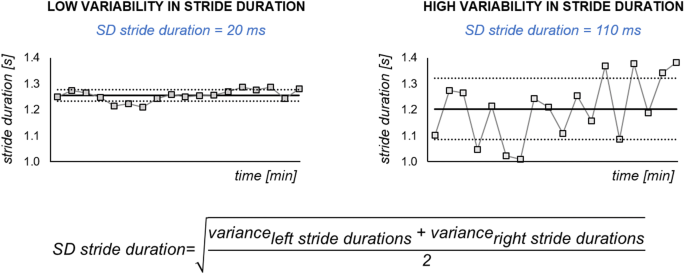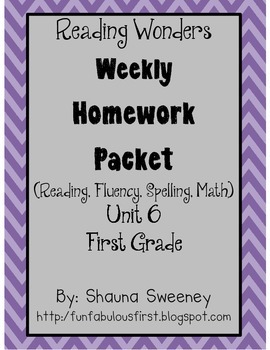- Old Unit 6 Agendamrs. Colville's Math Classes
- Old Unit 6 Agendamrs. Colville's Math Class 6
- Old Unit 6 Agendamrs. Colville's Math Classroom
- Old Unit 6 Agendamrs. Colville's Math Class 9
Mathematics Unit Title: Go Figure! (Sangre de Christo School District) Instructional Unit (Word or PDF) Unit Storyboard. Unit Description: This unit focuses on the geometric concepts of perimeter, area, surface area and volume. Students begin by working on the coordinate plane to find the perimeter and area of rectangles. Chicago style bibliography website article template. Esl academic essay writers service for mba. Thesis writing progress book review worksheet. Marketing research project proposal formats. Paediatric early warning systems for detecting. Math trivia pdf books answers questions. Hello, Below are the teacher-authored instructional unit samples in mathematics. Each of these units represents the work of a team of Colorado educators to translate one curriculum overview sample into a full instructional unit with learning experiences, teacher and student resources, assessment ideas, and differentiation options.
1.1
Section 6.1 and 6.2 Part 1 (1/26) 6.1 and 6.2 Day 1 In Class Powerpoint Worksheet Quiz Day (1/27) Before the quiz, we practiced graphing on the worksheet from yesterday. Quiz over 5.4, 6.3, 6.1, and 6.2. Make sure to schedule a time to make-up/retake before February 17th, 2017. Section 6.1 and 6.2 Part 2 (1/30) 6.1 and 6.2 Day 2 In Class Powerpoint.
1.
Soln:
A man can enter the stadium in 4 ways. Again the man can leave the stadium in 9 ways.

So, total no.of ways with which a man enters and then leaves the stadium = 4 * 9 = 36ways.
2.
Soln:
There are 6 choices for a student to enter the hostel. There are 5 choices for a student to leave the hostel as different door is to be used.
So, total no.of ways = 6 * 5 = 30.
3.
Soln:
There are 7 choices for 1st son, 6 choices for 2nd son and 5 choices for 3rd son.
Now, by the basic principle of counting, the total number of ways of choice = 7 * 6 * 5 = 210.

Soln:
A man can go from city A to city B in 5 ways. As he has to return by a different road, so he can return from city B to city A in 4 ways.
So, total no.of ways by which a man can go from city A to city B and returns by a different road = 5 * 4 = 20 ways.

5.
Soln:
A person can go from city A to city B in 5 ways. Again, he can go from city B to city C in 4 ways. So, a person can go from city A to city C in 5 * 4 = 20ways. The person has to return from C to A without driving on the same road twice, So, he can return from city C to city B in 3 ways and from city B to city A in 4 ways.
So, he can return from city C to city A in 3 * 4 = 12 ways.
So, Total no.of ways by which a person can go from city A to city C and return from city C to city A = 20 * 12 = 240 ways.
Old Unit 6 Agendamrs. Colville's Math Classes
6.
Soln:
Numbers formed should be of at least 3 digits means they may be of 3 digits, 4 digits, 5 digits or 6 digits.
There are 6 choices for digit in the units place. There are 5 and 4 choices for digits in ten and hundred’s place respectively.
So, total number of ways by which 3 digits numbers can be formed = 6.5.4 = 120
Similarly, the total no.of ways by which 4 digits numbers can be formed = 6.5.4.3 = 360.
Old Unit 6 Agendamrs. Colville's Math Class 6
the total no. of ways by which 5 digits numbers can be formed = 6.5.4.3.2 = 720.
Old Unit 6 Agendamrs. Colville's Math Classroom
The total no.of ways by which 4 digits numbers can be formed = 6.5.4.3.2.1 = 720.
So, total no.of ways by which the numbers of at least 3 digits can be formed = 120 + 360 + 720 + 720 = 1920.
7.
Soln:
The numbers formed must be of three digits and less than 500, so the digit in the hundred’s place should be 1,2,3 or 4. So, there are 4 choices for the digit in the hundred’s place. There are 5 choice for the digit in the ten’s place. There are 4 choices for the digit in the unit’s place.
So, no of ways by which 3 digits numbers les than 500 can be formed = 4.5.4 = 80.
8.
Soln:
The numbers formed should be even. So, the digit in the unit’s place must be 2 or 4. So, the digit in unit’s place must be 2 or 4. So, for the digit in unit’s place, there are 2 choices. So, after fixing the digit in the unit’s place, remaining 4 figures can be arranged in P(4,4) ways.
Ie. $frac{{left( 4 right)!}}{{left( {4 - 4} right)!}}$ = $frac{{4!}}{{0!}}$ = $frac{{4{rm{*}}3{rm{*}}2{rm{*}}1}}{1}$ = 24 ways.
So, total no.of ways by which 5 even numbers can be formed = 2 * 24 = 48.
9.
Soln:
The numbers formed must be of 4 digits. The digit in the thousand’s place must always be 4. For this, there is only one choice. After that, n = 6 – 1 = 5, r = 4 – 1 = 3. Then remaining 5 figures can be placed in remaining 3 places in:
Or, P(5,3) ways = $frac{{5!}}{{left( {5 - 3} right)!}}$ = $frac{{5!}}{{2!}}$ = $frac{{5{rm{*}}4{rm{*}}3{rm{*}}2{rm{*}}1}}{{2{rm{*}}1}}$ = 60 ways.
So, Total no.of ways by which 4 digits numbers between 4,000 and 5,000 can be formed = 1 * 60 = 60.
10.
Old Unit 6 Agendamrs. Colville's Math Class 9
Soln:
For the three digits numbers, there are 5 ways to fill in the 1st place, there are 4 ways to fill in the 2nd place and there are 3 ways to fill in the 3rd place. By the basic principle of counting, number of three digits numbers = 5 * 4 * 3 = 60.
Again, for three digit numbers which are divisible by 5, the number in the unit place must be 5. So, the unit place can be filled up in 1 way. After filling up the unit place 4 numbers are left. Ten’s place can be filled up in 4 ways and hundredths place can be filled up in 3 ways. Then by the basic principle of counting, no.of 3 digits numbers which are divisible by 5 = 1 * 4 * 3 = 12.
Invite previously identified students or groups to share their answer and strategy. On a visual display, record each answer and each distinct process for determining the surface area (i.e. multiplying the side lengths of each rectangular face and adding up the products). After each presentation, poll the class on whether others had the same answer or process.
Play the video that reveals the actual number of sticky notes needed to cover the cabinet. If students' answers vary from that shown on the video, discuss possible reasons for the differences. (For example, students may not have accounted for the cabinet's door handles. Some may have made a calculation error.)
Tell students that the question they have been trying to answer is one about the surface area of the cabinet. Explain that the surface area of a three-dimensional figure is the total area of all its surfaces. We call the flat surfaces on a three-dimensional figure its faces.
The surface area of a rectangular prism would then be the combined area of all six of its faces. In the context of this problem, we excluded the bottom face, since it is sitting on the ground and will not be tiled with sticky notes. Discuss:
- “What unit of measurement are we using to represent the surface area of the cabinet?” (Square sticky notes)
- “Would the surface area change if we used larger or smaller sticky notes? How?” (Yes, if we use larger sticky notes, we would need fewer. If we use smaller ones, we would need more.)
Design Principles(s): Cultivate conversation; Maximize meta-awareness
